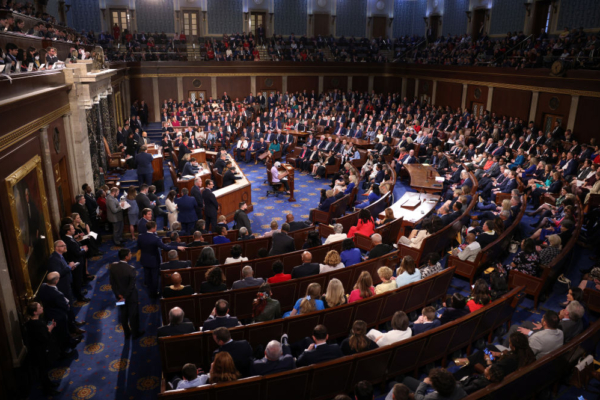On Tuesday, November 5th, it was the US election day, where all 435 seats in the House of Representatives were up for grabs. Pennsylvania, considered the “most crucial swing state” of this election, is also the battleground for five intense House races.
These elections are crucial in determining control of the House of Representatives, as Republicans need to defend their slim majority while Democrats need to gain four seats to flip control.
Three of the five key races are in eastern Pennsylvania. In these fiercely contested districts, Republican incumbent Brian Fitzpatrick and Democratic incumbents Susan Wild and Matt Cartwright are fighting to defend their seats.
The fourth competitive district is in southern Pennsylvania, where Republican Representative Scott Perry is seeking his seventh term. Another heated race is taking place in the suburbs west of Pittsburgh and in a district made up of former steel towns, where Democratic Representative Chris Deluzio is campaigning for his second term.
Here is a brief introduction to these five key elections:
Four-term Republican Congressman Brian Fitzpatrick will compete for another term in the district north of Philadelphia, including Bucks County, where he won in the 2020 election.
Fitzpatrick, a former FBI special agent with a mild personality, inherited the seat from his late brother. He enjoys strong advantages, including his family’s prominence and influence in traditionally Democratic areas.
He has garnered support from top unions and advertises himself as the “number one bipartisan congressman.”
His opponent is Democrat Ashley Ehasz, a former Army helicopter pilot whom Fitzpatrick defeated by nearly 10 percentage points in the 2022 election.
Democrats criticize Fitzpatrick for voting in favor of former President Trump’s tax cut bill, opposing Trump’s impeachment, and supporting a law banning abortions after 20 weeks in 2017.
Three-term Democratic Representative Susan Wild is facing off against State Representative Ryan Mackenzie in the district surrounding Allentown in eastern Pennsylvania.
Wild, a former city government lawyer, won by a slim margin of less than 2% in the 2022 election. The district includes rapidly developing suburbs and rural areas spanning coal-free zones, with Democrats holding a slight edge in voter registration in the district.
Matt Cartwright, a Democratic Congressman serving since 2013, is seeking to defeat first-time candidate Rob Bresnahan in the northeastern Pennsylvania district where the latter operates a family construction company.
The district supported Trump in the 2020 presidential election, making Cartwright one of five Democrats nationwide running for reelection in Trump-won areas.
Democrats have a slight edge in voter registration in this district, centered around the northeastern cities of Wilkes-Barre and Scranton, where President Biden was born, playing a significant role in his campaign.
Republican Congressman Scott Perry is facing a challenge from Janelle Stelson, a long-time local news anchor who switched from the Republican to the Democratic Party, in his seventh term race.
Perry, a former chairman of the House Freedom Caucus, and the only congressman who had his phone seized by the FBI during investigation of Trump, although he was not charged with a crime.
Stelson’s challenge lies in not residing in the district, which is Republican-leaning, encompassing Harrisburg and York, surrounded by deeply red suburbs, rolling farmland, and rapidly growing suburbs. However, she fiercely criticizes Perry for his anti-abortion stance and attempts to overturn the 2020 presidential election.
First-term Democratic Congressman Chris Deluzio is facing a challenge from State Representative Rob Mercuri in the western Pennsylvania district, where the election is not as high-profile as others.
Deluzio, a former navy officer and lawyer, focuses on voting rights and election security.
The district includes the western outskirts of Pittsburgh and the former steel town areas along the Ohio River from Allegheny County to Beaver County, with a Democratic to Republican voter registration ratio of 4:3.

